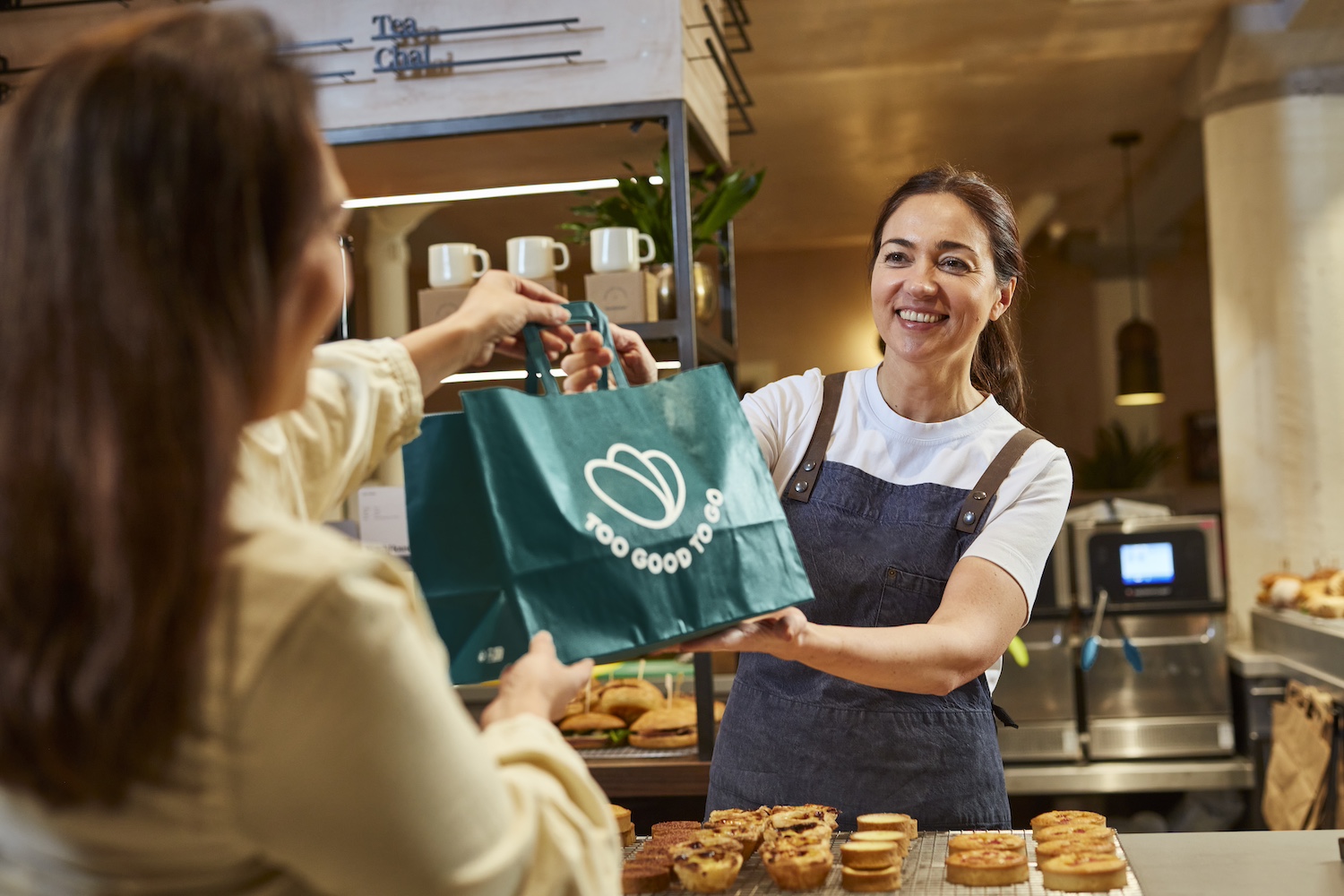
(Image courtesy of Flashfood.)
This story on mobile apps that reduce food waste is part of The Solutions Effect, a monthly newsletter covering the best of solutions journalism in the sustainability and social impact space. If you aren't already getting this newsletter, you can sign up here.
Households, retailers and food service businesses waste more than a billion tons of food each year, according to the most recent data from the United Nations Environment Program. Put in perspective, that’s roughly the weight of 5 million blue whales, the largest animals on Earth.
At the same time, over a third of humanity faces food insecurity, and 783 million people are hungry, according to the report. The amount of food wasted in households alone is enough to provide everyone impacted by hunger with a meal every day for a year.
On top of that, food loss and waste are responsible for 8 to 10 percent of global greenhouse gas emissions, and the amount of land used for agriculture is causing biodiversity loss.
Of the 1 billion tons of food waste documented by the U.N., 40 percent (or 2 million blue whales) came from the food services and retail industries.
Taking cues from the success of food delivery services and online marketplaces, entrepreneurs are designing mobile apps to address this part of the problem. These forward-thinking founders want food waste reduction to be as easy as ordering takeout or curbside grocery pickup. With the buzz they’re generating, these apps have potential to become household names, vying to be the answer to: “What should we do for dinner?”
Pick up surplus food surprise bags
Too Good To Go made a name for itself in 2016 by offering surprise bags of surplus food from local restaurants and businesses at a discounted price. The social impact company started in Denmark, quickly expanded to several other European countries, and now operates in 17 countries across Europe and North America. Its 90 million registered users and 155,000 active partner businesses make it the world's largest marketplace for surplus food.
Using the company’s platform, businesses list good food that would otherwise be thrown away at the end of the day for half price or less. On the app, buyers decide whether they want to purchase and pick up the food based on only the name of the business and the price. While scrolling through the options available near them, users will see bags from local small businesses as well as chain stores like Aldi and 7-Eleven. In some countries, the app also offers surplus food deliveries via mail directly from manufacturers and producers.
Over 300 million meals were saved through Too Good To Go since 2016. Each meal is equivalent to 2.2 pounds of food — the weight of 1,650 blue whales total — and avoids nearly six pounds of carbon dioxide emissions, 30 square feet of annual land use, and 214 gallons of water, according to the company’s annual impact report. And it’s just getting started. The app sees exponential growth every year, increasing the meals saved by 59 percent from 2021 to 2022 and 46 percent from 2022 to 2023.

Reduce your grocery bill while keeping food out of the landfill
Calling itself “the app for grocery’s best kept deals,” Flashfood focuses on closing the retail food waste loop while providing families with affordable, fresh food. Grocers list good food that can no longer be sold, like produce, meats and breads, on the Flashfood app for up to 50 percent off. Shoppers browse what’s available at stores near them and place an order for pickup as they would with any online grocery order.
Currently operating in the U.S. and Canada, almost 3 million users shop on Flashfood. In 2022, the company kept over 28 million pounds of food out of landfills — roughly the weight of 70 blue whales — and shoppers saved over $56 million.
Deliver fresh food to those who need it most
Launched by the Pittsburgh-based nonprofit 412 Food Rescue in 2016, Food Rescue Hero is a technology platform that coordinates the delivery of surplus food to hunger relief organizations in more than 37 North American communities. The platform alerts volunteer drivers about food donations ready to be picked up from businesses like Trader Joe’s and Whole Foods Market. Then, it tells them where to drop it off, similar to how a rideshare driver is directed to pick up and drop off passengers.
Thanks to 51,000 volunteers, the organization has redirected more than 160 million pounds of food — a weight equal to 400 blue whales — to those who need it most. As a result, 92 percent of the recipients say the program helps them make ends meet, and 86 percent say it increases their access to healthier food, according to the organization. Redirecting the food also prevented 290 million pounds of carbon dioxide emissions.
The bottom line
Food waste rescue apps still have a long way to go when it comes to accessibility. They often don’t include options for filtering out allergens, for example, and most are only available in large European and North American cities, though I was able to use Flashfood in Michigan’s rural Upper Peninsula.
The U.N. Environment Program actually recommends focusing food waste reduction efforts in cities to have the greatest impact, as rural areas generally waste less food.
While the food saved by these apps only makes a dent in the mountain of waste generated, no single effort can address a problem this large alone. Adding together the impact of many smaller initiatives can turn dents into craters.
Have you used an app designed to reduce food waste? Let us know what your experience was like here.

Taylor’s work spans print, podcasts, photography and radio. She brings her passion for covering social and environmental issues through the lens of solutions journalism to her work as assistant editor.














